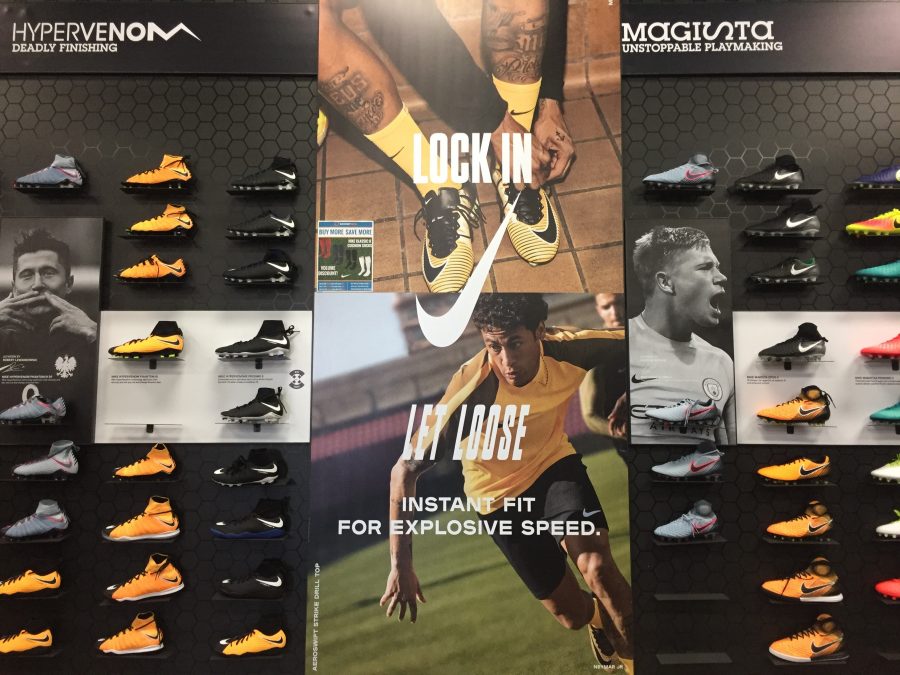In the year 2017, soccer cleats with ankle support are manufactured by some of the world's largest companies, using some of the world's most innovativ
In the year 2017, soccer cleats with ankle support are manufactured by some of the world’s largest companies, using some of the world’s most innovative and advanced materials. It can be daunting when walking into a soccer shop and being confronted with a wall of cleats that come in a myriad of shapes, colors and sizes.
Most kids know what they want regardless as to whether or not their selection is good for them (feel free to substitute candy for cleats in this example), but it is the parent’s of children who are committing the dollars on behalf of their children (feel free to substitute literally everything for cleats in this example), so it is vital that you the parent know as much as you can when shopping for that perfect cleat.
In this article I’ll break down some of the most important points to consider before committing to a pair of cleats for your soccer-playing child.
Know Your Role
First things first. What kind of player is your child? Are they a defender, a goalkeeper, a central midfielder or perhaps a striker? Do they thrive in the wide areas of the field?
These days, most cleat manufacturers make a concentrated effort to create footwear specifically for certain types of players, largely based on the role that the wearer is playing for their team. While it may seem a bit unnecessary for a young player who often shifts from position to position to wear a dedicated cleat, there are options for everyone out there. Here are some potential footwear options by position:
- Goalkeepers rely on sturdy traction in their footwear for the explosive movements they make in the heat of the moment. Look for stability mixed with a broader strike zone for those punts and goal kicks to be as accurate as can be. The Puma One 17.1 cleats are a great option for goalies who like to play on the front foot.
- Defenders need a blend of protective material, responsive studs and accurate passing and crossing support. Tough tackles and incisive passing are made easy with Adidas Ace 17+ cleats.
- Midfielders are well-rounded players who cover a ton of ground and benefit greatly from comfortable, supportive footwear that offers a bit of everything. Look no further than the Magista Obra and Opus cleats for a balanced stud configuration and an accurate passing surface.
- Wide Players come in all shapes and sizes, but the common denominator for excellence in these positions is pace. For dynamic and tricky movements are what cleats like Nike Mercurial Superfly and adidas x 17+ cleats.
- Strikers need to be accurate and powerful when it matters most in front of goal. The Nike Hypervenom Phantom cleats are designed for cutting and striking the ball and are ideal for the game’s most lethal players.
Size Matters
Another tricky part of the process is managing to find a pair of cleats that fit both the style of play and the size of foot. With young players who are constantly growing, balancing between an option that is comfortable now, and one that will still fit in 6 months can be a challenge.
Leather cleats have long been believed to stretch and mold to the wearer’s foot, and nowadays, many synthetic cleats are also form-fitting. Buying big and adding an extra insole layer is a nifty way to maximize your mileage, although there is no substitute for the cleat that just feels right.
Consider
Playing Surface
The last thing that you’ll have to consider when shopping for cleats is the actual surface of play that you’ll be active on. Broadly speaking, there are three types of surfaces, Firm Ground, Artificial Grass similar to what you’d find from Manchester artificial grass installers, and Indoor/Street surfaces.
- Firm Ground (FG) cleats are by far the most common and are best suited for most grass surfaces. The studs on firm ground cleats are built for great traction on the field.
- Artificial Ground (AG) cleats are made with man-made fields in mind. Many high schools and fields in regions that see little rain year-round have “turf” fields and cleat companies have taken notice. The soleplate that houses the studs on the bottom of a pair of cleats has been reinforced and many AG cleats have a conical shape to their studs to reduce drag and mitigate cleats catching on the surface.
- Indoor and street soccer (IC) shoes are a newer line compared to the amount of time standard studs have been around. The rise of futsal as a method for developing technique as well as everyday wearability have made street soccer shoes immensely popular. Whether you are playing on the wood inside a gym or on an outdoor court, IC shoes are the way to go.
Miscellaneous
When you’ve done all your research and have narrowed your selection down to a mere handful of options, the next best way to find the perfect pair for your child may be to ask a teammate or coach who knows your child’s style and what they need. If pricing is on your mind, several manufacturers have take-downs, basically the same style of cleat with slightly different materials that may be more appealing to you.
Additionally, when in doubt, follow the lead of the world’s best. If you want to play like Manchester United’s Juan Mata, you may try to find a pair of the Nemeziz 17+ cleats he wears when he suits up for the Red Devils and Spain. Prefer Arsenal FC’s Olivier Giroud? Then look no further than the Puma evoPOWER for your hero’s choice.
Check out the full range of our youth soccer cleats at soccerloco.com today!
